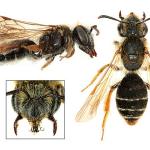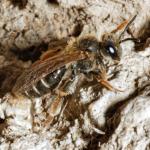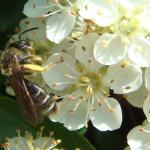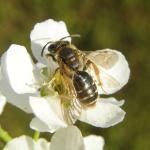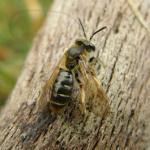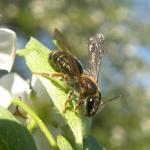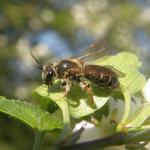The females of this medium-sized Andrena can be found very commonly in late spring, often visiting the flowers of early umbellifers. Typical specimens are fairly easily recognised in the field: the male has a yellow clypeus with two small black dots at the sides, the female has a shining black abdomen with thin white hair lines at the apices of the segments and a tuft of brown-gold hairs at the tip. The scopa on the hind leg is a bright golden colour. Unfortunately, this happy state of affairs is often upset by the high frequency of stylopised specimens, where all manner of mixtures of male and female characters may occur. Confusion is most likely with female Andrena fulvago (Christ). However, that species flies a little later, from mid June onwards, and visits composites only.
Found throughout England, though with surprisingly few records in the south-west, and Wales. There is one record in Scotland and none for Ireland or the Channel Islands.
It is widespread in Southern and Central Europe.
This species is not regarded as scarce or threatened.
Occurs in a range of habitats, but especially at the edges of woodland and in woodland clearings on clay soils.
Late March to early June.
A solitarily nesting species.
A wide range of late-spring flowers.
This species is often parasitised by Stylops hammella Perkins (Strepsiptera).
2016


